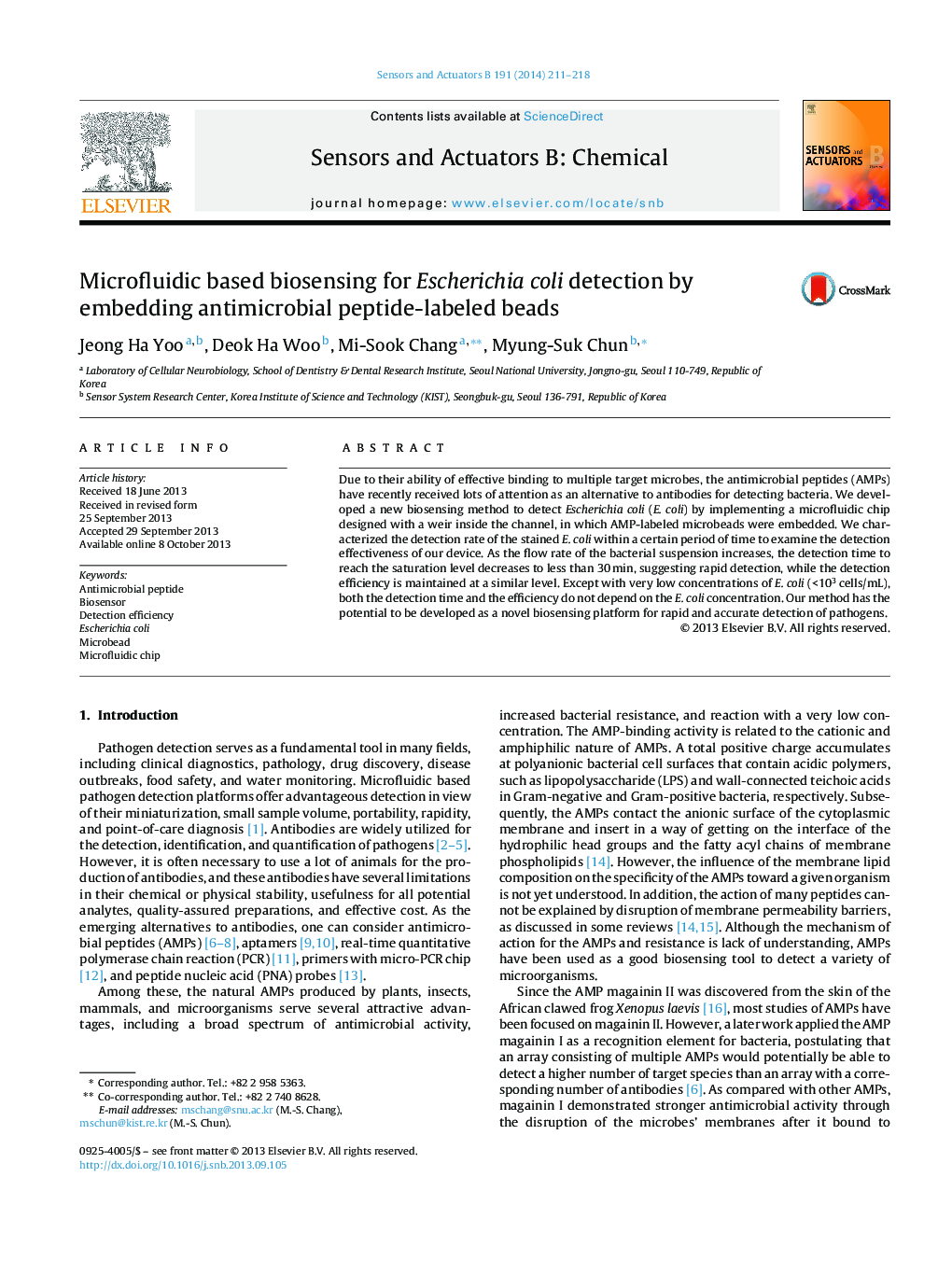| Article ID | Journal | Published Year | Pages | File Type |
|---|---|---|---|---|
| 7147418 | Sensors and Actuators B: Chemical | 2014 | 8 Pages |
Abstract
Due to their ability of effective binding to multiple target microbes, the antimicrobial peptides (AMPs) have recently received lots of attention as an alternative to antibodies for detecting bacteria. We developed a new biosensing method to detect Escherichia coli (E. coli) by implementing a microfluidic chip designed with a weir inside the channel, in which AMP-labeled microbeads were embedded. We characterized the detection rate of the stained E. coli within a certain period of time to examine the detection effectiveness of our device. As the flow rate of the bacterial suspension increases, the detection time to reach the saturation level decreases to less than 30Â min, suggesting rapid detection, while the detection efficiency is maintained at a similar level. Except with very low concentrations of E. coli (<103Â cells/mL), both the detection time and the efficiency do not depend on the E. coli concentration. Our method has the potential to be developed as a novel biosensing platform for rapid and accurate detection of pathogens.
Keywords
Related Topics
Physical Sciences and Engineering
Chemistry
Analytical Chemistry
Authors
Jeong Ha Yoo, Deok Ha Woo, Mi-Sook Chang, Myung-Suk Chun,
